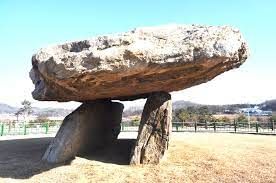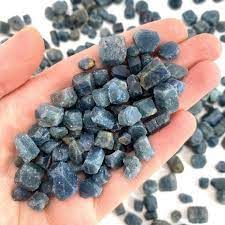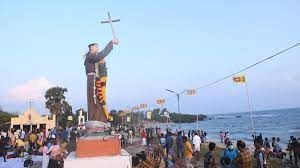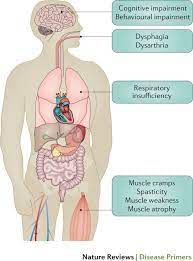UPSC Daily Current Affairs- 20th August 2023 | Current Affairs & Hindu Analysis: Daily, Weekly & Monthly PDF Download
GS-I
Megalithic site
Subject: History
Why in News?
A large number of megalithic hat stones were found from a single site during a recent archaeological salvage excavation conducted by the Kerala State Archaeology Department at Nagaparamba in Kuttippuram village, near Tirunavaya.
Key findings:
- Hat stones, popularly called Thoppikkallu in Malayalam, are hemispherical laterite stones used as lid on burial urns during the megalithic period are fond here.
- The findings may throw light on the life and culture of people who lived in those parts more than 2,000 years ago.
What are Megaliths?
- These were constructed either as burial sites or commemorative(non-sepulchral) memorials
- The former are sites with actual burial remains, such as dolmenoid cists(box-shaped stone burial chambers), cairn circles (stone circles with defined peripheries) and capstones (distinctive mushroom-shaped burial chambers found mainly in Kerala).
- Non-sepulchral megaliths include memorial sites such as menhirs.
- In India, archaeologists trace the majority of the megaliths to the Iron Age(1500 BC to 500 BC).
- In India, these are concentrated in the states of Maharashtra(mainly in Vidarbha), Karnataka, Tamil Nadu, Kerala, Andhra Pradesh and Telangana.
Tirunavaya
- It is the land of ancient Mamankam.
- It is situated on the banks of Bharathapuzha river; it is a place of historical importance.
- In olden days, Mamankam a grand assembly of rulers was held once in 12 years here.
Source: The Hindu
Sapphire
Subject: Geography

Why in News?
In Jammu and Kashmir, Lieutenant Governor said that within the next year, the Sapphire mines will be auctioned in a scientific way to give a boost to the local economy.
About Sapphire:
- The name SAPPHIRE is derived from the Latin word ‘Saphirus’ and the Greek word ‘Sapherios’ both the words mean blue.
- The scientific name of sapphire is called corundum. It is made up of aluminium oxide (Al203) mineral.
- Corundum comes in all types of colours like red, pink, yellow, orange and violet.
- Distribution:
- Sapphire is found all over the world. Sri Lanka is still a top source for natural sapphire.
- In India the reserves/resources of corundum are found in association with kyanite and sillimanite in Assam, Meghalaya and Maharashtra.
- It occurs in syenites and ultrabasic rocks in Telangana.
- The total reserves/resources of sapphire was estimated at 450 kg, all of which is placed under 'Remaining Resources' category and is located in Jammu & Kashmir.
- Uses:
- Sapphire has emerged as a versatile material useful to a range of industries in many varied applications including LEDs, optical and Radio Frequency Integrated Circuits (RFICS).
Why is Kashmir sapphire famous?
- Kashmir sapphires are valued as significantly as they are because they contain only the best specimens.
- These specimens are noted to have a superior cornflower blue tint with a sleepy quality to them.
Source: Newsonair
GS-II
Ponzi scheme
Subject: Government Schemes

Why in News?
Recently Odisha police arrested the India head of Chinese earning application (online Ponzi scam).
About Ponzi scheme:
- A Ponzi scheme is an investment plan in which the operator or the operating company pays returns to investors from the new capital coming in from new investors instead off the profits of the business.
- The investors get attracted to these schemes because of the unusually high rate of return offered within shorter time spans compared to other conventional investment options.
- These schemes start off as legitimate businesses.
- However, they often fail to sustain them with operating income alone.
- So, in order to meet the promises made to their investors, the capital gathered from new members gets used up.
- For example, a hedge fund can turn into a Ponzi scheme if it faces unexpected losses and cannot legitimately meet the desired returns.
- The promoters then start forging reports instead of admitting their failures.
History:
- The scheme got its name from Charles Ponzi, a fraudster who duped thousands of investors in 1919.
- Ponzi promised a 50% return within three months on profits earned from international reply coupons.
- Due to the fluctuations in postage prices, it was not unusual to find that stamps were pricier in one country than another.
- Ponzi saw an opportunity in the practice and decided to hire agents to buy cheap international reply coupons on his behalf then send them to him.
- He exchanged the coupons for stamps, which were more expensive than what the coupon was originally bought for.
- The stamps were then sold at a higher price to make a profit.
- This type of trade is known as arbitrage, and it is not illegal.
- Under the Securities Exchange Company, he invited people to invest in the company, promising 50% returns within 45 days and 100% within 90 days.
Characteristics and concerns of a Ponzi scheme:
- High investment returns with little or no risk
- Overly consistent returns: The Ponzi schemes give guaranteed investment opportunity which is suspicious.
- Unregistered investments: Ponzi schemes typically involve investments that have not been registered with state regulators.
- Unlicensed sellers: Most Ponzi schemes involve unlicensed individuals or unregistered firms.
- Secretive or complex strategies: The investments in Ponzi schemes cannot be understood and do not give complete information.
- Difficulty receiving payment: -promoters routinely encourage participants to “roll over” investments and sometimes promise even higher returns on the amount rolled over.
Safeguards against Ponzi Schemes in India:
- Ponzi schemes are banned under the Prize Chit and Money Circulation (Banning) Act, 1978.
- It is a Central Act but the respective State governments are the enforcement agency of this law.
- These are also dealt with by the Enforcement Directorate under the Prevention of Money Laundering Act, 2002.
- The Banning of unregulated Deposit Schemes Act 2019 has been enacted to prevent fraudulent schemes.
- It provides for severe punishment ranging from 1 year to 10 years and fines ranging from 2 lakh to 50 crore rupees to act as a deterrent.
- It has adequate provisions for disgorgement or repayment of deposits in cases where deposits have been raised illegally.
- It mentions that the first claim on the recovered money will be that of depositors.
Way Forward:
There has been attempts to regulate Ponzi schemes have taken the form of SEBI’s ‘collective investment scheme’ regulations. By law, any scheme that amasses more than Rs.100 crore requires SEBI’s permission. The regulations allow SEBI to act where it comes across an illegal collective investment scheme.
Source: The Hindu
The Katchatheevu controversy
Subject: International Relations

Why in News?
Tamil Nadu Chief Minister M.K.Stalin, has revived the debate over Katchatheevu by reiterating the demand for retrieval from Sri Lanka.
- Katchatheevu is an uninhabited and barren 285 acre islet about 14 nautical miles off Rameswaram.
When did Katchatheevu become a part of Sri Lanka?
- In June 1974, the then Prime Ministers of India and Sri Lanka, Indira Gandhi and Sirima R.D. Bandaranaike, signed an agreement.
- The agreement demarcated the boundary between the two countries in the historic waters from Palk Strait to Adam’s Bridge.
- Later, a joint statement was issued. It stated that a boundary had been defined in conformity with the historical evidence, legal international principles and precedents.
- It also pointed out that this boundary falls one mile off the west coast of the uninhabited Katchatheevu.
- The pact brought to a close the talks held between the two sides since 1921.
How important has been Kachatheevu to the fisherfolk?
- Fisherfolk of the two countries have been traditionally using the islet for fishing.
- This feature was acknowledged in the 1974 agreement.
- However, the supplemental pact in March 1976 made it clear that fishing vessels and fishermen of the two countries shall not engage in fishing in the historic waters, territorial sea and exclusive zone or exclusive economic zone of either of the countries without the express permission of Sri Lanka or India.
- Anthony’s Church there holds an annual festival, either in February or March, drawing devotees from both sides of the Palk Bay, a tradition which has been going on.
What triggered the negotiations between India and Sri Lanka?
- Sri Lanka claimed sovereignty over Kachatheevu on the ground that the Portuguese who had occupied the island during 1505-1658 CE had exercised jurisdiction over the islet.
- India’s contention was that the erstwhile Raja of Ramnad [Ramanathapuram] had possession of it as part of his zamin.
How was the 1974 agreement received?
- The present demand for the Katchatheevu retrieval traces its origin to the opposition that the pact generated in 1974.
- Former Prime Minister Atal Bihari Vajpayee, who was the Jan Sangh’s leader, had contended that the decision to transfer the islet had been taken behind the back of the people and Parliament.
- After remaining low nearly for over 15 years, the Katchatheevu issue got revived in August 1991 with the then Chief Minister Jayalalithaa demanding retrieval.
- She later modified her demand to one of getting back the islet through a lease in perpetuity.
What has been the stand of the Union government on the issue?
- The question of retrieval of Kachchatheevu from Sri Lanka did not arise as no territory belonging to India was ceded to Sri Lanka. This was told by the Union government to the Supreme Court in August 2013.
- It contended that the islet was a matter of dispute between British India and Ceylon (now Sri Lanka) and there was no agreed boundary.
- This matter was settled through 1974 and 1976 agreements.
- In December 2022, the Union government, while referring to the two agreements, pointed out in its reply in the Rajya Sabha that Katchatheevu lies on the Sri Lankan side of the India-Sri Lanka International Maritime Boundary Line.
- It added that the matter was sub-judice in the Supreme Court.
Source: The Hindu
GS-III
Agnibaan: Pioneering with 3D-Printed Engines
Subject: Science and Technology

Why in News?
Chennai-based Agnikul Cosmos takes a significant step as it moves its innovative rocket, Agni-1, to Sriharikota for integration assessments.
- Successful integration checks could position Agnikul as the second Indian space-tech firm, following Skyroot Aerospace, to achieve suborbital space flight capability.
Agnikul’s Remarkable Space Vehicle: Agnibaan
- Agnibaan SOrTeD is a single-stage launch vehicle powered by Agnikul’s patented Agnilet semi-cryogenic engine.
- In contrast to traditional sounding rockets, Agnibaan SOrTeD’s vertical take-off and precise trajectory enable orchestrated maneuvers during flight.
(A) Distinct Features of Agnibaan
- Customizability: The rocket offers custom launch configurations, either single or two-stage launches.
- Impressive Dimensions: Standing at 18 meters and weighing 14,000 kg, Agnibaan SOrTeD is a powerful presence.
- Payload Capacity: With a capacity for payloads of up to 100 kg, it can reach altitudes of 700 km in five different Lower Earth Orbits (LEOs).
- Engine Configuration: The first stage can house up to seven Agnilet engines, powered by Liquid Oxygen and Kerosene, dependent on the mission’s requirements.
- Versatile Launch: Designed for launch from over 10 different launch ports.
- Launch Pedestal ‘Dhanush’: AgniKul’s built ‘Dhanush’ supports the rocket’s mobility across configurations, ensuring compatibility with multiple launch ports.
- Cutting-Edge Agnilet Engine: The world’s sole single-piece 3D-printed engine powers the entire operation.
(B) Innovative Agnilet Engine
- Heart of the Vehicle: Agnilet engine, a 3D-printed, single-piece, 6 kN semi-cryogenic marvel, drives Agnibaan’s propulsion.
- Propellant Composition: The engine employs a novel blend of liquid kerosene and supercold liquid oxygen as propellants, successfully tested at the Vikram Sarabhai Space Centre.
Source: PIB
Amyotrophic lateral sclerosis
Subject: Science and Technology
Why in News?
Recently the suggestion of counting the condition of amyotrophic lateral sclerosis as a rare disease was put forth by support groups.
Background:-
- Support groups for patients with amyotrophic lateral sclerosis urge that the condition be counted as a rare disease, which they hope will ease eligibility for financial assistance.
About Amyotrophic lateral sclerosis:-
- It’s also known as Lou Gehrig’s disease.
- It is a neurodegenerative disease.
- In this, the motor neurons in the brain and spine are affected.
- Motor neurons: control an individual’s voluntary functions like walking, chewing, talking, and moving their arms.
- Neuron: a specialized cell in the nervous system that is responsible for transmitting information through electrical and chemical signals.
- As these nerve cells progressively die, the muscles dependent on them are unable to function or move, due to which they begin to atrophy or waste away.
- It is a progressive disease.
- Once it involves the motor neurons that regulate respiratory muscles, breathing gets affected.
Effect of Amyotrophic lateral sclerosis:-
- The two types of motor neurons are:
- Upper motor neurons: the motor nerve cells in the brain and spinal cord.
- Their job is to send signals to lower motor neurons.
- Lower motor neurons: the motor nerve cells in the brain stem (lower part of your brain) and spinal cord.
- They receive instructions from the upper motor neurons.
- They then send messages to the muscles telling them to move.
- Issue caused in the body: As the motor neurons (nerve cells) continue to decline, they can’t send signals to your muscles.
- Diagnosis: From the onset of symptoms, it takes around 8 to 15 months for diagnosis.
- Treatment: Currently, there is no effective cure for this disease.
Source: The Hindu
|
38 videos|5293 docs|1118 tests
|
















